The “23rd Japan Media Arts Festival Award-Winning Works Exhibition” was held from September 19 (Sat.) to 27 (Sun.). Related events, such as talks and workshops by the award winners, were held during the exhibition period. On September 27 (Sun.), a cross-sectional talk entitled “Distance Between Expression and Society” was broadcast on a special website, featuring ITO Asa, Associate Professor at the Tokyo Institute of Technology; SAYAWAKA, writer/story critic; ISHIOKA Yoshiharu, critic/Associate Professor at Waseda University; and ODAGIRI Hiroshi, selection member of the Manga Division/freelance writer. This article reports on the event.
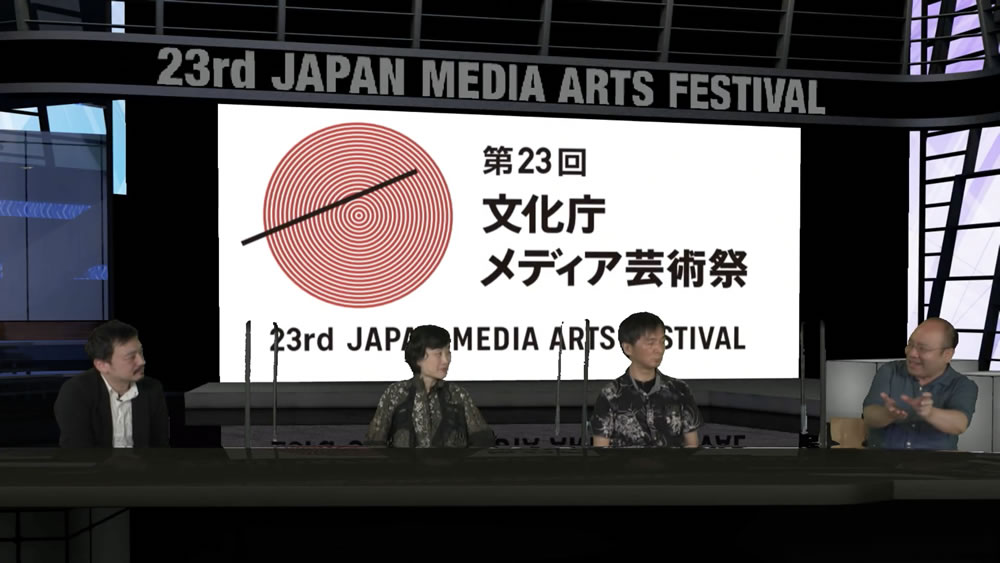 A scene from the event. From left, SAYAWAKA, ITO, ODAGIRI, and ISHIOKA.
A scene from the event. From left, SAYAWAKA, ITO, ODAGIRI, and ISHIOKA.
A look back at trends in animation, manga, and art in the 2010s
In 2020, while the novel coronavirus pandemic continued to restrict the places for expression socially and politically for an extended period, there was a strong awareness of the relationship and distance between “expression and society,” the talk’s theme. However, this time was not limited to that. Since the Great East Japan Earthquake in 2011, expressionists in Japan have been searching for their own position. The talk started with such a question from SAYAWAKA, who also served as a moderator.
In response, ITO Asa, ISHIOKA Yoshiharu, and ODAGIRI Hiroshi gave their impressions of the situation and changes in their respective fields over the past 10 years. ISHIOKA spoke about the animation field, noting the synchronization of Puella Magi Madoka Magica (2011) with the earthquake. He said that animation, which is often thought to be fictional and distanced from society, was actually responding to social situations very vividly in the 2010s. As notable trends in recent years, he touched on the popularity of themes such as content tourism, music activities by idols and bands, and the rise of events such as real live performances derived from these activities. However, restrictions have been imposed on these activities due to the outbreak of coronavirus infections, and a change in the trend will be inevitable in the future. In addition, the retrospective exhibition of TAKAHATA Isao, who passed away in 2018, was held at the National Museum of Modern Art, Tokyo, the following year, which raised the social and cultural position of the animation field itself.
ODAGIRI said that the biggest change in the manga field over the past 10 years has been the transformation of the media itself into e-books and applications. The advertisements for manga applications that appear in web browsers are selected based on the audience’s interest, so that they do not ask whether the work is new or old. He also noted that there has been a shift in the sense of the period of consumption from buying a weekly magazine every week, and that this shift was preceded by the start of selling inexpensive paperbacks at convenience stores and the appearance of manga cafes, and he mentioned the process of change. He added that the distribution of foreign manga in Japan has increased over the past decade.
ITO described the last decade in the art field as a period when artists became strongly involved in the field and the issues at hand, like the cultural anthropologization of art. As an example, she noted that many art festivals were held throughout Japan. She said that while the involvement of artists in local communities and their production leads to the revitalization and empowerment of local communities, art may only be a temporary substitute for the solution of social problems that should be taken care of practically by the government, and that there is a transformation in the nature of art, which originally takes a step back and is critical of the government and the nation.
She also mentioned self-censorship of expression as an issue, which was highly related to the theme of this talk session. The theme of the Aichi Triennale 2019, “Taming Y/Our Passion,” included the three emotions of “information,” “emotion,” and “compassion.” She then talked about their relationship with self-censorship by mentioning a movement to remove works of art dealing with social topics, which has been increasing in the past 10 years in various parts of Japan.
Regarding the relationship between self-censorship and personal emotions, she stated that just as artists censor their own expressions, individuals also have a sense of suppressing their emotions for fear of being bashed or coming under fire on the Internet.
She also introduced the voice of a student who said, “I don’t need emotions,” viewing emotions only as an impediment to rational decision-making. However, she said that emotions are essential by nature for the ability to make intuitive judgments about situations. Another major question for art is how to handle emotions. Based on the above findings, the speakers continued to exchange their opinions, focusing on “self-censorship,” “emotions,” “digitalized content of artworks,” and “digitization of media.”
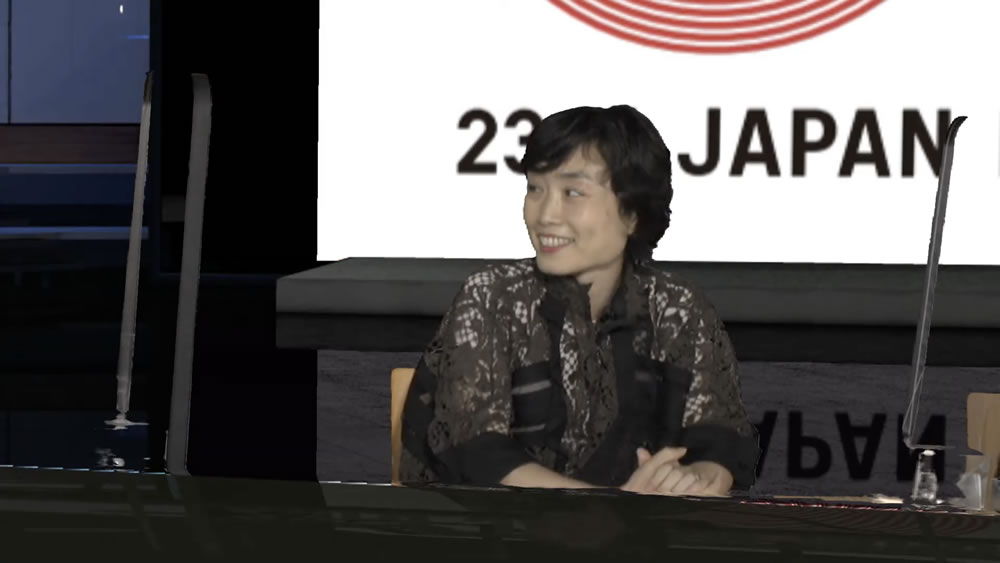 ITO
ITO
States of self-censorship in each field
The speakers were asked to speak on the topic “self-censorship,” which was raised by ITO, as a major issue that crosses all fields.
ISHIOKA said that at the time an original work is ready, it seems as if it is decided in advance whether it will be developed into live-action or animation, depending on the subject matter. As a result, he said he feels constrained by the limited range of subjects that can be used in animation. Particularly, in animation in recent years, there has been a strong tendency to portray the main character suffering from a so-called “communication disorder.” So original works that focus on romance, such as girls’ manga, will be developed into live-action.
In the field of comics, there are segments based on the age of the target audience, such as “Shonen” (boys) Jump and “Young” (young adult) Jump in weekly magazines. ODAGIRI said these segments have become more and more fragmented since the 1960s, with each segment having its own regulations and sense of compliance.
SAYAWAKA mentioned the difference and sharing of censorship standards in different fields, and speculated that the moral standards of the stories depicted in American games and Hollywood movies, which have crossover players in the world of CG art, may be similar.
On the other hand, ITO said that although compliance is important, it may lead to the detachment of the real voices of the people concerned, and that when the appropriateness of expression is being questioned, it is necessary to respond flexibly to each situation. In order to choose the best action for various events based on the conditions of the moment, she said, it is more important to have ethics that respond to individual situations rather than morality as a universal command.
Expressive activities in today’s SNS-driven world
However, it is very difficult to share the details of the situation in the field and the ethics at play on social networking sites. Will the spread of information to people who do not know what is happening on the ground and can only make judgments based on moral values continue to accelerate in the future. In response to this question, ITO said that in contrast to the directness and instantaneousness of the Internet, which allows anyone to transmit information on their own, art is essentially an indirect medium in which the work of art is mediated by the artist. Because it is indirect, the speed of transmission is slow. She said that this inherent characteristic of art may have a special character in today’s highly direct world.
ODAGIRI said that he found the direct transmission of information by artists on social networking sites has made messages obsolete, moralized, and consumed as symbolic. Then, he emphasized the importance of the abstraction of the presence of manga works, which are detached from the artists. He cited the reputational damage to Japanese living overseas after the Great East Japan Earthquake as an example of awareness of problems that are not limited to the field of manga. It should not be possible, he said, to say something carelessly on social media with insufficient knowledge because essentially, the truth of the matter cannot be seen unless we know the problem from various aspects, such as the background of the problem and the background and emotions of each person involved.
Emotions and expressions
Regarding the relationship between expressions and emotions mentioned by ITO, ISHIOKA pointed out that in recent years, there has been a tendency in animation for people of the same gender to get along with each other rather than with the opposite gender, and that there are many depictions of characters in their teens or older communicating like young elementary school children. In other words, there are a lot of works that reveal hesitation in love and poor communication. He speculated that this tendency is influenced by education and social conditions. As indicated by the fact that the Japanese word “senpai” has spread around the world, Japanese teens, mainly in junior high and high school, are forced to behave in a hierarchical relationship, which is unique in the world in that they are separated by small age differences, and this relationship often acts as a form of pressure. In response to the harsh reality of what is commonly referred to as a school caste, teens in animation avoid relationships appropriate to their age and elementary school relationships are portrayed as innocuous. In the hit animation Anohana: The Flower We Saw That Day (2011), a group of high school students, whose relationships have become strained, yearn for the elementary-school days that were found to be innocent. The animation suggests that the real-life environment of junior high and high school may be one of the seeds of suppressed emotional expression.
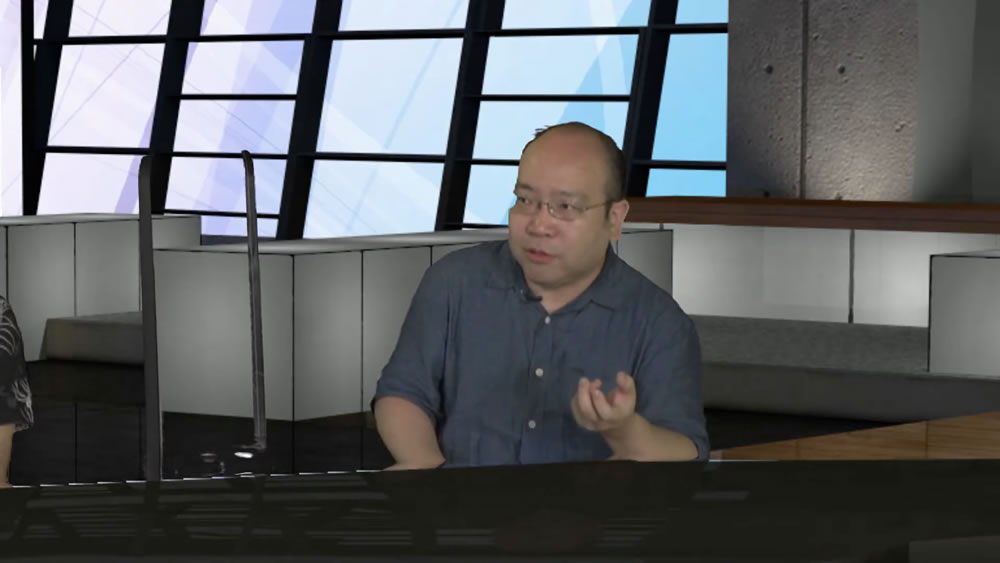 ISHIOKA
ISHIOKA
The effects of digging through the archives amid the ongoing COVID-19 pandemic
—The Perils of Present-Centeredness
In the midst of the Black Lives Matter movement, the movie Gone with the Wind (1939) was temporarily removed from video distribution sites because of its inappropriate representations. The move became a major topic of conversation. In recent years, as various media have been digitized and archived, we have had more and more access to past works, and the COVID-19 pandemic has increased that access even more. In line with the topic of censorship, opinions were exchanged on how to deal with the uncomfortable feeling of seeing such past expressions from the current perspective.
ISHIOKA gave specific examples of Neon Genesis Evangelion (1995–1996, hereinafter “Eva”) and Sailor Moon (1992–1997) and objectively referred to the changes in his own perception of their settings and depictions as a viewer between the past and present. In the case of Eva, the depiction of boys and girls as soldiers who were forced to fight, which was not openly questioned at the time the animation was aired, feels uncomfortable nowadays. The romance between junior high school and college students in Sailor Moon is also uncomfortable. However, he said the portrayal of romance in Sailor Moon should have been viewed positively as an expression of longing when it was aired in the 1990s and that both past and present views should not be rejected. Other specific examples were given by the speakers, such as Shakespeare’s inappropriate expressions, Aristotle’s affirmation of slavery, and the story of statues being pulled down around the world today. In addition, they talked about the danger of falling into present- centeredness with regard to time-based issues.
The elimination of formats and barriers through electronic distribution and its impact on expression
We have explained the importance of ethical decision-making in the field, but even so, might it be possible to have a guideline or yardstick? And are there advantages to having one? In response to such questions from SAYAWAKA, ODAGIRI said that even if we try to have a yardstick, the digitization of media and the distribution of content will invalidate the separation that manga magazines have maintained by assuming a target age group. In the same way as in the field of music, which is now distributed and consumed in units of songs rather than albums, he suspects that the unit of the manga magazine will be dismantled. However, this cannot be said to be a demerit in general. He said expressions will be sought according to the situation, such as the revival of short stories.
Regarding these advantages, ISHIOKA mentioned that because of the solid format of Japanese manga, it may be possible to dispel a sense of resistance that people have felt toward American comics.
According to ODAGIRI, a survey of university students shows that such barriers have already been nullified, and what they read as manga is Korean webtoons, which they view by scrolling vertically. It is necessary to separate property and content in order to promote the spread of the nullification of such barriers. Using the Marvel Cinematic Universe (MCU) as an example, he argued that the Iron Man property is different from the Iron Man comic book, and that the same subject matter can be used in different ways. It is necessary to change the mindset if the platform changes, and it is natural that the expression also changes. He suggested that we should break away from the conventional notion that the Japanese manga format is universal and good enough for the world, and think about expression in accordance with the new platform.
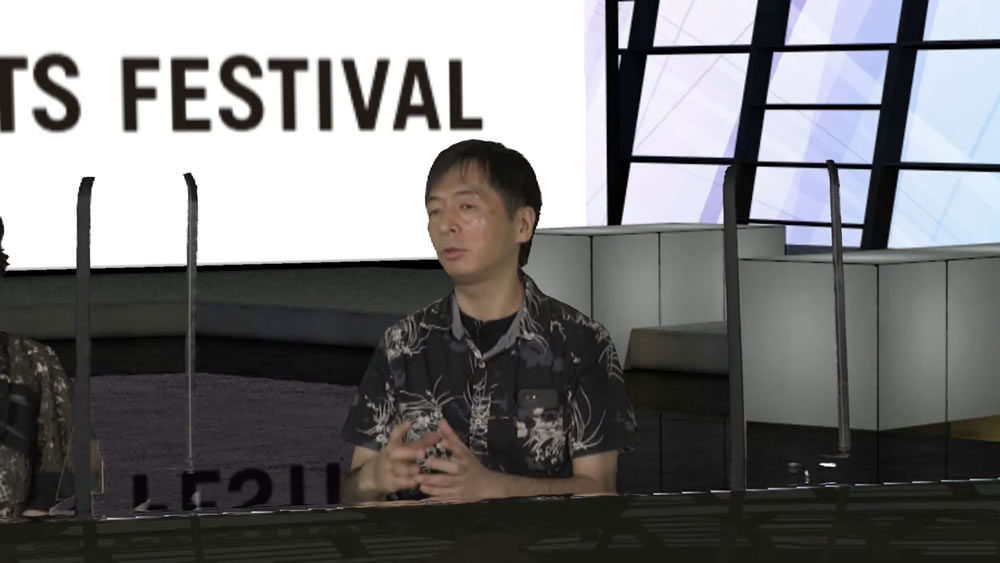 ODAGIRI
ODAGIRI
Amid the ongoing COVID-19 pandemic, where yesterday’s reality becomes a fantasy, we must reset our starting point to the present
Following ODAGIRI, each of the speakers talked about the prospects of their respective fields. ISHIOKA touched on his own surprising experience of how a scene in an animation (such as a depiction of a large crowd of people gathered at a live concert venue), which he had previously depicted as everyday life, appeared to be a grand fantasy due to the change in lifestyle caused by the COVID-19. He expressed his hope for changes in expression that will result from this change.
ITO also said COVID-19’s impact was so great that even if the situation were to end, it would not return to the same level as before. She added that art has been placing a heavy burden on the environment in the course of its economic activities, and that we are now in a situation where such activities cannot continue indefinitely.
SAYAWAKA noted that the pandemic also provided an opportunity to re-evaluate the significance of the existence of video games in the gaming sector. He said titles such as Animal Crossing: New Horizons (2020) are seen as a successful economic activity amid the COVID-19 pandemic, but rather than success as an economic activity, it is necessary to understand what people were looking for and to re-evaluate the games’ demand and potential.
What was derived from this talk session was a common understanding that cuts across disciplines from each of the speakers of the importance for artists living in the present to reconsider the situation surrounding expression in the present, including not only the transformation of lifestyles caused by the COVID-19 pandemic but also the Internet environment, such as social networks, that existed prior to the pandemic, and to position their starting point in the present.
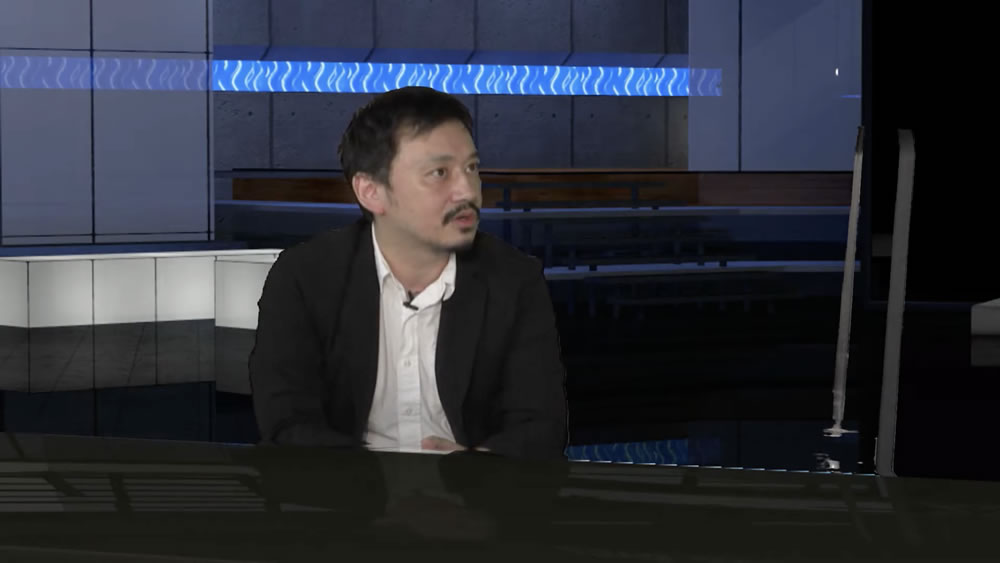 SAYAWAKA
SAYAWAKA
Social networking and other communication tools on the Internet can be permissive receptacles for expression, but they can also be brutal. As ITO mentioned, by looking at them objectively and dispassionately, it is possible to re-evaluate how the inherent characteristics of each field of expression can work in today’s society by confronting the current situation. The value of expression is not absolute but mutates with the times and circumstances. It seems that what is needed to determine value and meaning is to gain knowledge, consider the situation, and develop an ethical sense to make better decisions, rather than referring to predetermined guidelines.
(information)
23rd Japan Media Arts Festival Cross-Division Talk
“The Distance Between Creative Expression and Society”
Broadcast date and time: Sunday, September 27, 2020, 12:00–13:00
Speakers: ITO Asa, Associate Professor at Tokyo Institute of Technology; SAYAWAKA, writer and story critic; ISHIOKA Yoshiharu, critic and Associate Professor at Waseda University; and ODAGIRI Hiroshi, selection member of the Manga Division and freelance writer.
Organizer: 23rd Japan Media Arts Festival Executive Committee
https://j-mediaarts.jp/
*The award-winners’ talk and interviews were broadcast on the special website
and posted through October 31, 2020.
*URL link was confirmed on October 20, 2020.











